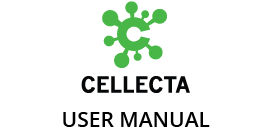Clonotype extraction can be performed using MiXCR. The pipeline includes alignment of raw sequencing reads using align, error correction using correctAndSortTags, assembly of aligned sequences into clonotypes using assemble, and exporting the resulting clonotypes into tab-delimited file using exportClones.
The reads can be aligned with MiXCR using the following command:
mixcr analyze local:cellecta-new-bulk-kit \
--species $SPECIES \
--assemble-clonotypes-by $ASSEMBLY_TYPE \
$SPLIT_CLONES_CONFIG \
--$MOLECULE \
--tag-pattern $TAG_PATTERN \
--rigid-left-alignment-boundary \
--floating-right-alignment-boundary $BOUNDARY \
--export-productive-clones-only \
$READ_1 \
$READ_2 \
$OUTPUT_NAME"
where:
$SPECIES = hsa (human) or mmu (mouse)
$ASSEMBLY_TYPE = CDR3 (CDR3 amplicon) or {CDR1Begin:FR4End} (Full length amplicon)
$SPLIT_CLONES_CONFIG = --split-clones-by C (if working with B cells to distinguish isotypes) or otherwise skip this option
$MOLECULE = rna (for RNA) or dna (for DNA)
$BOUNDARY = J (CDR3 amplicon) or C (Full length amplicon)
$READ_1, $READ_2 = paired end read file names (e.g. sample_a_R1.fastq.gz, sample_a_R2.fastq.gz)
$OUTPUT_NAME = name of output files (e.g. sample_a)
The $TAG_PATTERN is always:
'^(R1:*)\^(MIVBC:GCATCAN)(R2:*)|^(MIVBC:AGTCGTN)(R2:*)|^(MIVBC:TCGCATCN)(R2:*)|^(MIVBC:AGCGTAGN)(R2:*)|^(MIVBC:TACGACTN)(R2:*)|^(MIVBC:CTGATGAN)(R2:*)|^(MIVBC:CATAGCATN)(R2:*)|^(MIVBC:GTAGGCTAN)(R2:*)'
is specified by the 8 validator barcodes.
The preset cellecta-new can be accessed by saving the file cellecta-new-bulk-kit.yaml in the directory of the MiXCR script that can be obtained here
More details can be found on the MiXCR official website: Cellecta AIR Assay Guide.
Need more help with this?
Contact Us

